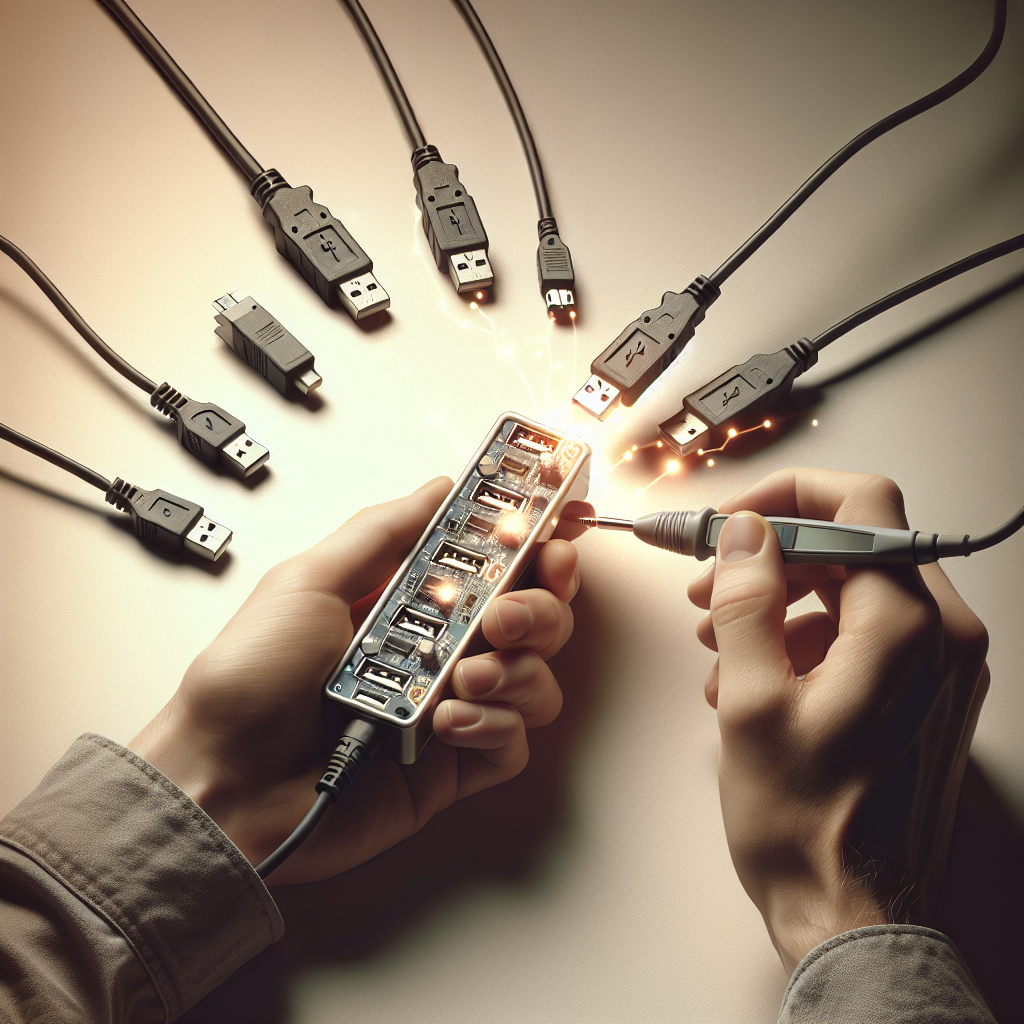How do I troubleshoot connection issues with my USB splitter?
Introduction
USB splitters are handy devices that allow you to connect multiple USB devices to a single USB port. However, like any technology, they can experience connection issues. Whether you’re trying to connect a keyboard, mouse, or external hard drive, a malfunctioning USB splitter can be frustrating. In this article, we’ll explore how to troubleshoot connection issues with your USB splitter effectively.
Common USB Splitter Connection Issues
Before diving into troubleshooting, it’s helpful to familiarize yourself with common connection problems that might arise with USB splitters. Here are some typical issues:
- Devices not recognized by the computer
- Inconsistent power supply to connected devices
- Slow data transfer rates
- Interference from other USB devices
Summary of Common Issues
| Issue | Description |
|---|---|
| Devices not recognized | The connected device is not detected by the computer. |
| Inconsistent power supply | Devices may intermittently disconnect or not power on. |
| Slow data transfer | Files transfer at a slower than expected speed. |
| Interference | Other devices may disrupt the connection of devices connected via the splitter. |
Troubleshooting Steps
1. Check Physical Connections
Begin by inspecting all connections:
- Ensure that the USB splitter is properly plugged into the USB port.
- Verify that all cables leading to your devices are securely connected.
- Try connecting the devices directly to the computer to ensure they work without the splitter.
2. Test the USB Splitter
To determine whether the problem lies with the splitter itself:
- Plug in a different USB splitter, if available, and see if the issue persists.
- Connect a known working USB device to the splitter and test it.
- If the new splitter works fine, consider replacing the faulty splitter.
3. Power Supply Considerations
Some USB splitters require an external power source, especially if multiple devices are connected:
- If your splitter has a power adapter, ensure it is plugged in and functioning correctly.
- Check if the power light is on (if applicable).
- Use a powered USB hub if you’re running multiple power-hungry devices.
4. Update Drivers and Firmware
Outdated drivers can cause USB issues:
- Check for updates on your computer’s USB controllers.
- Access the Device Manager in Windows, locate the USB controllers, and select ‘Update driver.’
- Restart your computer after updating drivers.
5. Remove USB Conflicts
Your computer may have too many devices connected. To resolve conflicts:
- Disconnect all devices connected to the USB splitter.
- Reconnect devices one by one, checking if each is recognized.
- Identify if there’s a specific device causing the issue.
6. Check for Hardware Faults
Ensure there’s no physical damage to your splitter:
- Inspect USB ports for dust or debris.
- Check for frayed cables or damaged connectors.
- Consider replacing the splitter if it shows signs of wear or damage.
7. Test with a Different Computer
If possible, connect your USB splitter to another computer:
- If the splitter works on another machine, the issue may be with your original computer.
- Further troubleshoot the USB settings on the original computer.
Advanced Troubleshooting
1. Investigate USB Power Settings
Sometimes, USB power settings can affect connectivity:
- In Windows, go to the Control Panel and find ‘Power Options.’
- Select your current power plan, and click on ‘Change plan settings.’
- Click on ‘Change advanced power settings’ and locate USB settings. Disable USB selective suspend.
2. Use USB 3.0 Ports
Utilizing USB 3.0 ports can often resolve speed issues:
- Check if your device supports USB 3.0; if so, connect it directly to a USB 3.0 port for faster data rates.
- Be aware that USB 3.0 is backward compatible with USB 2.0.
3. Examine System Resource Usage
Excessive resource use could hamper USB functionality:
- Open the Task Manager on Windows to check CPU and Memory usage.
- Terminate unnecessary programs that could be affecting performance.
4. Reinstall USB Controllers
If issues persist, a fresh reinstall may help:
- Open Device Manager, right-click the USB controller, and select ‘Uninstall device.’
- Restart your computer; Windows will reinstall the USB drivers.
5. Consult the Manufacturer’s Support
If all else fails, consult customer support:
- Access the manufacturer’s website for specific troubleshooting guides.
- Contact support if your equipment is still under warranty.
Conclusion
Troubleshooting USB splitter connection issues can be frustrating, but by following the steps outlined in this article, you can diagnose and often resolve the problem. Remember to check physical connections, power supplies, and driver updates, and don’t hesitate to seek professional assistance if needed. With a little patience and persistence, you’ll have your USB devices working smoothly in no time!

